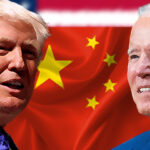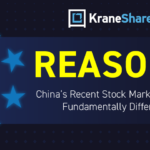The Operations and Creation/Redemption Process of US Listed International Exchange Traded Funds
Over the last decade Exchange Traded Funds have increased in assets exponentially. Investors have gravitated to ETFs for a variety of reasons: low expense ratios, tax efficiency, transparency of holdings, and specificity of exposures to name a few. ETFs contain characteristics of both stocks and mutual funds
Mutual Fund Characteristics
- Securities are held on behalf of shareholders
- Provide a prospectus, 1099DIV, annual/semi-annual report, and governed by a board of directors
- Dividends or coupons are passed along to shareholders
- Shares outstanding can increase or decline
- Provide a NAV everyday
Stock Characteristics
- Listed on stocks exchanges like the NYSE and Nasdaq
- Shares can be purchased or sold short
- Shares can be purchased on leverage
- Many ETFs are optionable
Investors purchase or sell US exposure ETF shares on the exchange through their broker. In many cases a buyer and seller can exchange shares at an agreed upon price.
Authorized Participants are brokerage firms that create and redeem ETF shares by delivering or receiving the ETF’s underlying basket of securities. Every night ETF providers send out a portfolio composition file that is akin to a recipe of how to build or dismantle an ETF. In the case of a purchase, when a buyer’s share amount exceeds the shares available in the market, Authorized Participants will buy the underlying securities that comprise the ETF and deliver those shares to the ETF provider. In return the AP receives ETF shares that are passed along to the buyer. The graph below shows how the process works.
International ETFs differ in that the underlying securities' markets tend to be closed during US trading hours. In order to facilitate buying and selling in international ETFs, APs often hold an inventory of ETF shares to aggregate the cost of transacting in the underlying securities. By owning shares of the ETF, the AP will hedge the exposure through a variety instruments such as futures, shorting the underlying basket of stocks or other similar ETFs.
In circumstances when the AP lacks ETF shares in inventory, the price buyers are quoted from an AP is based on where they believe the securities can purchased the next day. The quote price is based on a number of reference points and factors such as:
- The underlying securities’ currency movement versus the US dollar during US trading hours.
- Market news that may affect the underlying stocks’ market.
- US stock or sector movement that may affect the international ETF’s underlying securities.
- ADRs are certificates issued by US banks used to facilitate trading of foreign securities on US exchanges. The movement of ADRs can provide a potential indicator where the underlying securities and market will open the next day.
- Hong Kong stock exchange includes a stamp tax of 0.2% per security transaction. APs are responsible for paying the stamp tax which they will include in the price quoted.
While the operations of US-listed international ETFs is similar to domestic ETFs, there are unique elements to the creation/redemption process. The role of an AP involves both art and science in the creation and redemption process of international ETFs.


















